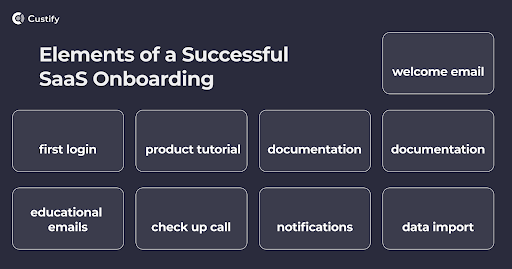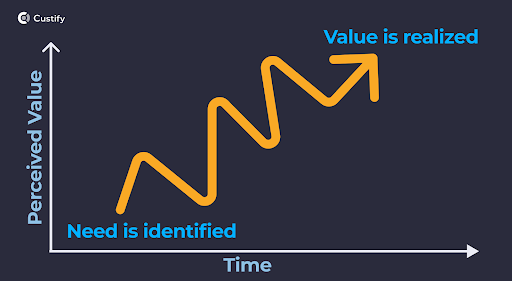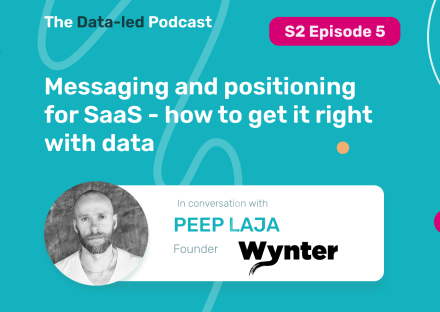The #1 task of Customer Success Managers is to ensure their customers are successful, and that’s very difficult to achieve with a faulty product. In turn, this affects CSMs’ performance, as well as organizations’ ability to grow and scale.
Bugs and lack of specific functionalities customers look for, although crucial to address as soon as possible, are not the only issues CSMs encounter. Here are some of the biggest product challenges customer success teams face.
Product Challenges that Affect Customer Success
1. Integration with current tools and workflows
Two top criteria potential customers are usually concerned with are how a new product will integrate with the tools and processes already in place and migration challenges that could occur. For early customers, some integrations might be planned later on the roadmap, some will take more time to build, and for some, you might not be able to offer them at all.
How to mitigate this challenge
Ideally, the sales process should include a trial period, so customers can get a feel of your product. And the CS team should use this timeframe wisely – most probably, new customers don’t see the benefits your product can deliver yet, so you need to identify their pain points and address them.
Highlight what your product does differently or better than what they’re already using. This strategy works particularly well when leads don’t already use a dedicated (competitor) tool but something they came up with internally that (ideally) is not scalable. This way, you can emphasize the time and effort your product can save them.
If integration with a specific tool is a problem, make sure you put integrating with that tool on your product’s roadmap. If prospective customers have reservations about the migration process, make sure the development team builds functionality for easy migration – effective communication between the CS and product team is crucial for these last two points.
Concierge onboarding can be very effective if you lack certain integrations with other tools or third-party apps (especially if your competitors have them). This type of onboarding allows CSMs to shift the customers’ attention towards other strong assets of your product, help undecided customers reach their “aha moment” faster, and recognize the value of your product.
Concierge onboarding also helps with building a strong relationship between your product and the customer, and the promise and certainty offered by a CSM count more than a release date on a roadmap.
However, if you have a specific timeline about when those integrations will happen, sharing it with the customer also helps. Just be sure that you’re not overpromising, and under delivering.
2. Positioning and UVP
As a CSM, you need an in-depth understanding of your ideal customer (what their problems are, what they need, what they value most from a product, etc.) to do your job efficiently. If your product’s positioning and UVP are not clear, specific, and pain-point oriented, you’ll find it challenging to articulate your thoughts and arguments in front of your customers.
How to mitigate this
Make sure you have strong positioning, backed by data and customer insights, and, moreover, make sure everyone in the company and cross departments is aligned regarding positioning and USP/UVP. If you want to nail your positioning, a good practice is to constantly optimize it with client insights. What successful B2B companies do to achieve this is they create as many contexts as possible for customer development interviews (they even schedule regular interviews with customers every 1-2 months). And upon gathering new insights, they allign all stakeholders in the company so everyone can use the new information during onboarding, sales calls, etc. This way, everyone knows what clients say and can prioritize addressing what matters most to them.

3. Inefficient onboarding
The onboarding process can make or break a SaaS business as it’s the most common reason users abandon a product. If onboarding requires a lot of effort on your customers’ part, whether that’s caused by bugs, a steep learning curve, or a complex and time-consuming migration process, you can expect a high churn rate during this phase.
How to mitigate this
The obvious solution would be to design an onboarding process that’s easy, intuitive, and fast.
However, this is not always easy to do. A few such examples are when:
- your niche is very new, and there are no previous flows to inspire your product development process
- your product is very complex
- your market is very regulated (think how fintech products need to ask their customers to take a selfie they can verify against their identity documents – this adds friction during onboarding, but it’s not something you can avoid)
- there are not enough resources, especially for startups (not enough people, small budgets, etc.)
- your product is still an MVP or in the early stages, still under development, and it has a poor user experience.
If these are your challenges, then concierge onboarding might help a lot, together with recorded onboarding tutorials, user guides, product tours, and educational content that explains why your product is worth the effort.
4. Product complexity
Another common reason users churn is product complexity. Most products will suffer staff or end-user churn at some point – this means the employee who knows how to use your product leaves your client’s company. Sometimes, they don’t train their successors, and if your product is not intuitive, this could potentially lead to churn as the new employee could push for a new tool that’s easier to understand and use.
This is the case for products like HubSpot, for example, that require “knowledge handover” – someone in the client company who has an in-depth understanding of the product they’re using needs to explain to the new employee how they use that product internally.
Also, keep in mind that, when deciding whether to use or continue using your product, companies will also consider their employees’ time, whether your product helps them become more productive or, on the contrary, adds unnecessary overhead (for example, maybe getting training on how to use your product takes too much of their time and they’re not being productive).
So the bottom line is if your product is hard to learn and use, the CS team will have a hard time keeping clients happy.
How to mitigate this
Obviously, you should try to lower your product’s complexity as much as possible. A few tactics to do so are:
- being proactive and not reactive – learn to identify and eliminate challenges before they become a reason for churn
- ensuring you have a good feedback loop in place, so you can identify and address common difficulties, as well as opportunities for improvement through new functionalities
- including customers in beta tests for new features
- having an efficient ticketing system in place for customer support
- offering concierge onboarding to get new customers up and running as fast and frictionless as possible.
Stay aware of the challenges your customers might face. Many companies try to hide them so they can appear more advanced to knowledgeable than they actually are – transparency is the best policy in this case.
5. Time to value

Time to value (TTV) is a metric that measures how much time passes since a customer purchases a product until they actually receive value. Ideally, you should keep this metric as low as possible for a great customer experience.
However, it’s also possible that a customer will buy your product and be successfully onboarded, but they won’t see the (exact) value you provide for quite some time – this is the case for tracking analytics products, for example, where you start seeing results only after 3 to 6 months.
How to mitigate this
Out of all the product challenges mentioned, this is, perhaps, the most challenging to address, but not impossible. A few tactics you can use are:
- having an attractive pricing strategy and ensuring that you calibrate expectations correctly during sales. It also helps if CSMs are involved in the sales process, as this makes for a smoother handover process later
- having regular (monthly meetings) to ensure customers stick around long enough to receive value and they understand the value/importance of your product
- highlighting quick wins.
Conclusion
Although, because of the nature of their role, CSMs will be among the first to identify the challenges above, product-related issues can only be solved when the entire organization comes together. Ultimately, it all comes down to managing expectations and ensuring there’s a match between the value the customers perceive and what’s actually delivered.

As the CEO of Custify, Philipp Wolf helps SaaS businesses deliver great results for customers. After seeing companies spend big money with no systematic approach to customer success, Philipp knew something had to change. He founded Custify to provide a tool that lets agents spend time with clients—instead of organizing CRM data.





